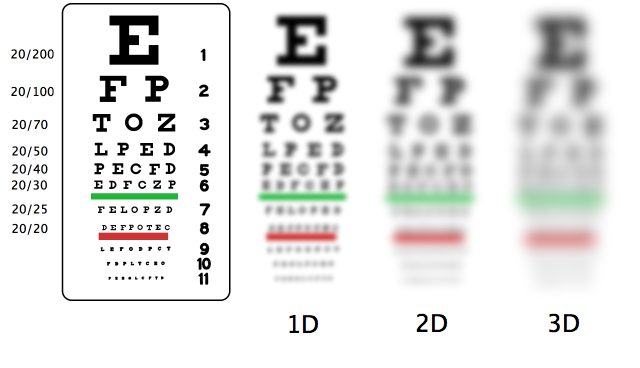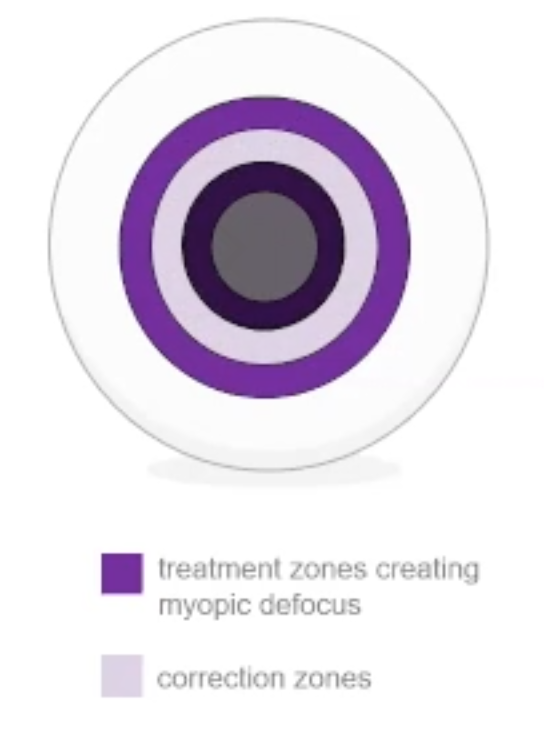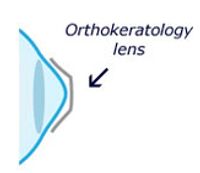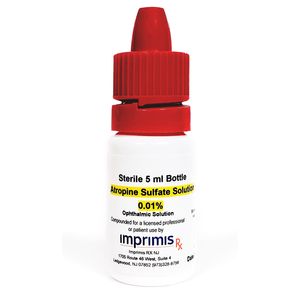What is Myopia?

Myopia, also called nearsightedness, is the inability to see things clearly when viewing in the distance. Myopia develops when the length of the eyeball progressively becomes longer from front to back, which causes light to focus in front of the retina rather than directly on it. This is the most common refractive error among children and young adults. Most patients with this condition wear eyeglasses or contacts to correct their vision.
How Prevalent is Myopia?
Myopia, now considered a pandemic, is becoming increasingly prevalent around the world, with a recent study showing that close to 30% of the world’s population is currently myopic. It is estimated that by 2050, close to 50% of the global population will be myopic with nearly 1/5th at risk for blindness. That means, out of ~10 billion individuals, ~5 billion of them will have myopia and ~1 billion will be blind regardless of age!

Myopia rates have shot up in the last 20 years. In China, between 10-20 % of elementary students are myopic. This number increases to 50% for high school students, and by the time they reach college, 90% of them are nearsighted. Of these individuals, 10% to 20% have sight-threatening pathologic myopia.
With Myopia Control Therapy, you have the control in protecting your children from landing on the wrong side of this statistic. The goal of this therapy is to slow or even stop the progression of nearsightedness.
Causes of Increased Myopia

Optometrists have been experiencing an exponential growth of progressive myopia cases in children and young adults (up to age of 30). There are many contributing factors: long period's of non-stop reading or digital device usage, lack of outdoor activities and sun exposure, parental history of myopia, and many others. While glasses and contact lenses compensate for a child’s blurry distance vision, they CAN NOT stop your child’s vision from continuing to deteriorate.
As children grow, myopia start progression can occur pretty quick. Majority of time, Dr. Patel recommends these high risk children to be seen every 6 months in order to quantify the rate of progression. Once progression is proven, the earlier the therapy is started, the better the long term outcome!
Risk Factors
Risk factors for myopia development include the following:
- Asian or Hispanic Descent
- One or both parents myopic
- One or more siblings myopic
- Sleeping less than 7 hours per night
- Spherical equivalent less than +0.75 DS before the age of 6
- Axial length elongation
- less time spent outdoors
- More near work activities
The Dangers of Myopia!
Studies show there is more to worry about with myopic eyes than ever before. Scientific studies has proven that as myopia rapidly progresses, those individuals have significantly increased long-term risks for serious eye conditions. These risks include, but not limited too, Retinal Detachment, Myopic Maculopathy, Macular Degeneration, Glaucoma and Cataracts.
One study concluded that more than 50 percent of retinal detachments "not related to trauma" are associated with myopia. Lets quantify an individuals risk:
- Mild myopic eyes (-0.25 to -3.00) have a four-fold increase in the risk of retinal detachment.
- Moderate myopic eyes (>-3.25) have a ten-fold increase in the risk of retinal detachment.
- Severely myopic eyes (>-6.00) have 20 to 80 times higher risk than a non-myopic individual!
BEWARE: In our experience, children are afraid to complain about vision to their parents due to fear of 1) getting in trouble and 2) risk of having electronic devices taken away from them.
Management and Treatment Options
Over the last ten years, highly effective means to slow down and even halt the progression of myopia without resorting to any kind of surgical intervention have changed many lives. Optometrist specializing in Myopia Control use the latest methods and are able to decrease the progression by an average of 50% or more. This significantly mitigates the long term risk to the child of developing serious eye conditions later on in life. The management options include the use of OrthoKeratology Lenses, Atropine Eye Drops, and Myopia Control Contact Lenses.MYOPIA CONTROL CONTACT LENSES
 UPDATED: Dr. Kumar Patel is Denton County's FIRST certified provider in CooperVision's Brilliant Futures Myopia Management Program. The MiSight 1 Day soft contact lenses, THE ONLY FDA APPROVED FOR MYOPIA CONTROL, are the most comfortable option when considering wearable myopic control devices. These lenses are inserted in the mornings and thrown away before bedtime. These lenses reduce the rate of myopia progression in children. Click below to learn more!
MiSight 1 Day Lenses
UPDATED: Dr. Kumar Patel is Denton County's FIRST certified provider in CooperVision's Brilliant Futures Myopia Management Program. The MiSight 1 Day soft contact lenses, THE ONLY FDA APPROVED FOR MYOPIA CONTROL, are the most comfortable option when considering wearable myopic control devices. These lenses are inserted in the mornings and thrown away before bedtime. These lenses reduce the rate of myopia progression in children. Click below to learn more!
MiSight 1 Day Lenses
ORTHO-K (Orthokeratology)
 OrthoKeratology Lenses is one of the latest, most universally effective methods for controlling myopia. It works by having the child sleep with a rigid gas permeable lens at night, which gently reshapes or molds the cornea to a shape conducive to normal visual acuity. The child removes the lens in the morning and the reshaped cornea provide clear vision throughout the day without the usage of any additional glasses or contacts.
OrthoKeratology Lenses is one of the latest, most universally effective methods for controlling myopia. It works by having the child sleep with a rigid gas permeable lens at night, which gently reshapes or molds the cornea to a shape conducive to normal visual acuity. The child removes the lens in the morning and the reshaped cornea provide clear vision throughout the day without the usage of any additional glasses or contacts.
ATROPINE EYE DROPS
 Atropine drops are a pharmaceutical solution that stimulates pupil dilation. The use of atropine to treat pediatric myopia dates back over 150 years. In extremely low doses, the progression of myopia slows down by about 50%, without any dramatic side effects. This is line of therapy, since the drops may burn/sting, the child may squeeze all of the medication out resulting in lower chances of actually controlling the condition. (Picture Credit: ImprimisRx)
Atropine drops are a pharmaceutical solution that stimulates pupil dilation. The use of atropine to treat pediatric myopia dates back over 150 years. In extremely low doses, the progression of myopia slows down by about 50%, without any dramatic side effects. This is line of therapy, since the drops may burn/sting, the child may squeeze all of the medication out resulting in lower chances of actually controlling the condition. (Picture Credit: ImprimisRx)
Other options such as bifocal or progressive lenses exists as possible management options but the chances of success are less at 25%, which is not acceptable to our office standards!
Start Being Proactive Today!
Five Habits To Slow Down Myopia Progression
- 1. Outdoor Activities: Spend 90 minutes or more each day outdoors in sunlight
- 2. Reduce Digital Screen Time:
- Toddlers (6-24 months), screen time is not recommended.
- Preschoolers (3-5 yrs), screen time should be no more than 1 hour.
- Elementary School (6-10 yrs), screen time should be no more than 2 hours.
- Middle School (11-13 yrs), screen time should be no more than 4 hours. This includes school work!
- 3. Hold reading material at least 13-16 inches away from eyes.
- 4. Follow the 20-20-20 Rule: Every 20 minutes, look 20 feet away for at least 20 seconds
- 5. The American Academy of Sleep Medicine recommends 9-12 hrs/day of sleep for children aged 6-12 year old (8-10 hrs/day for 13-18 year old)
